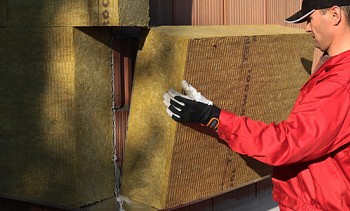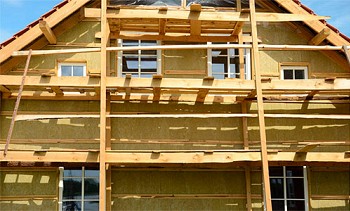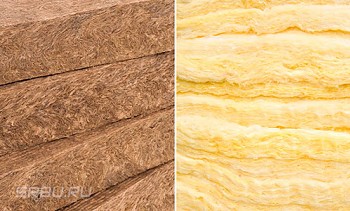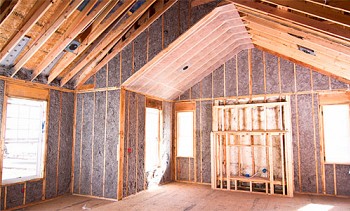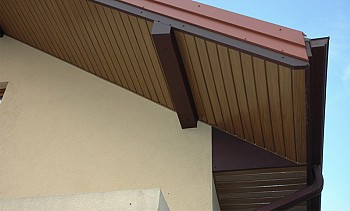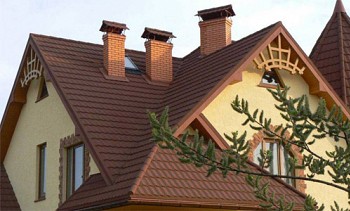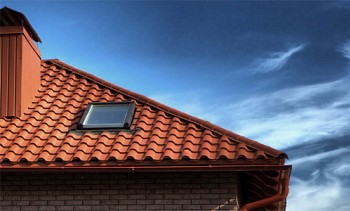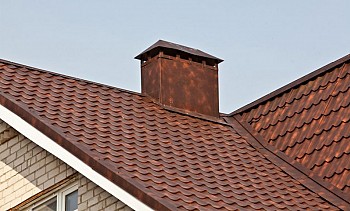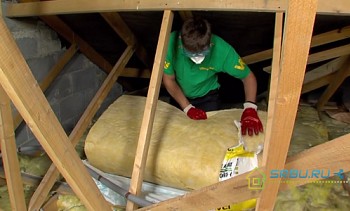Insulation for the roof - we make the right choice
Anyone will be pleased with the prospect of a thirty percent reduction in home heating costs. This is quite real - just such a result can be obtained by choosing the right insulation for the roof. In addition, we will receive other additional benefits. About it - further.
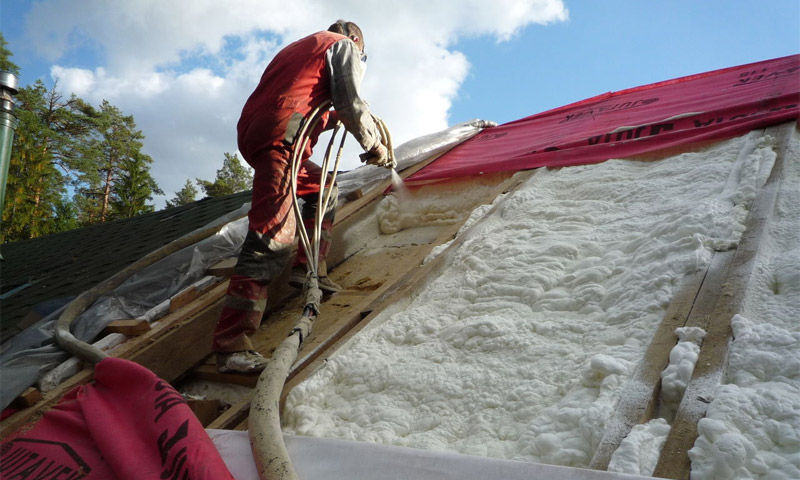
Content:
About the benefits of roof insulation
Let's calculate what will give our house the presence of insulation under the roof. We emphasize - not just anyhow, but a good insulation.
So we get:
- Additional protection against dust and moisture;
- the opportunity to dwell in the attic, i.e. equip a dwelling in the attic;
- salvation from the summer heat;
- optimal humidity in the house;
- savings on heating;
- reduction of external noise.
Perhaps it is now clear that insulation for the roof is necessary. But for different types of roofs and structural solutions, different types of insulation are used. We will talk about this further.
The roof is flat: what and how to insulate
A roof with a tilt angle of up to 12 degrees is considered flat. Covering it is the easiest way - no need to mess around with additional elements and be wise with a crate. It can be both unexploited and exploited. In the latter case, the roof is equipped with a rigid and solid base - because it takes considerable loads.
Choosing a heater for a flat roof, you first need to decide whether it will be exploited. If so, then we take a heat insulator with high moisture resistance and a load limit of up to 250 kilograms per square meter. For an unexploited roof, the load limit may be less, but the requirement for moisture resistance must be observed. As a rule, a flat roof is insulated with polystyrene foam (ordinary or extrusion type), less often basalt fiber mats are used for these purposes.
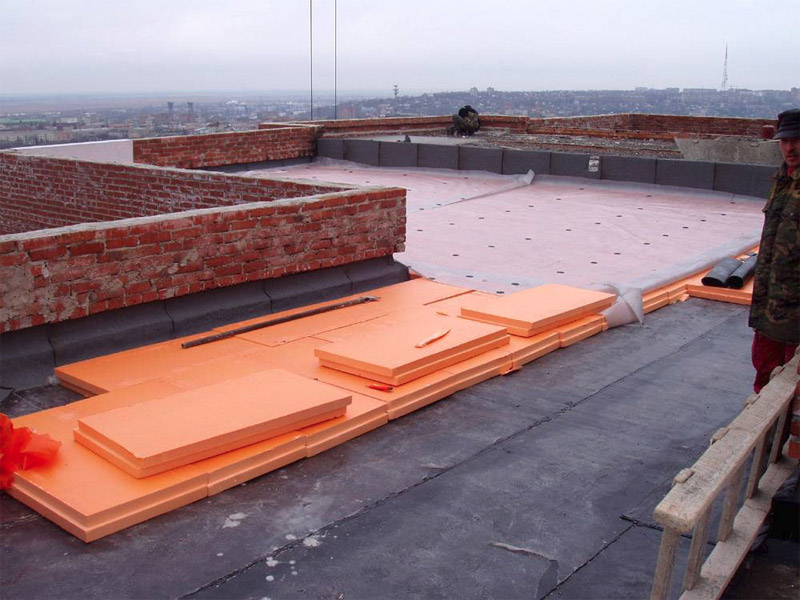
Insulation of a flat roof with plates of extruded polystyrene foam.
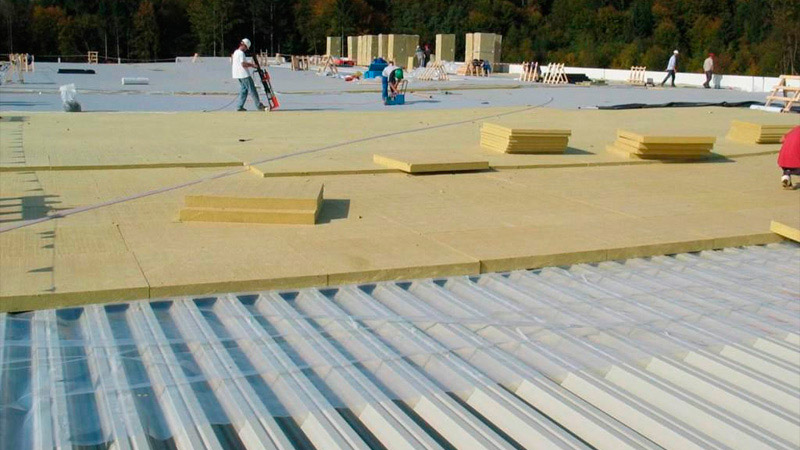
An example of warming a flat roof with basalt wool mats.
Expanded polystyrene is lightweight and costs slightly less. It is also easy to handle it, and even a special tool is not required. Styrofoam keeps the heat just fine, since almost all of it is made up of air. Of the disadvantages of this insulation should be noted combustibility. Therefore nand on a flat roof on top of this heat insulator, a non-combustible protection is applied in the form of a sand-cement screed.
Popular brands of insulation for a flat roof
We found out above that for insulation of a flat roof it is best to use polystyrene foam boards, now we will consider the most popular manufacturers producing various types of insulation based on polystyrene foam.
#1. Penoplex Roofing.
The older name of the insulation is PENOPLEX 35. Manufactured by a Russian company of the same name, it is nothing more than extruded polystyrene foam. It is produced in the form of plates with a thickness of 2 to 10 centimeters, a size of 0.6 by 1.2 meters. And the density of this insulation for the roof is 28-33 kilograms per cubic meter.
#2. EPSP Technonikol.
And again, the products of the Russian company - Technonikol. Extruded polystyrene foam manufactured under this brand has several varieties. For roof insulation, the following are applicable.
- XPS TECHNONICOL CARBON ECO - suitable for the roof of a low-rise building or a country mansion.
- XPS TECHNONICOL CARBON ECO DRAIN - differs from the previous material by the presence of drainage grooves on the plates. They help to ventilate a flat roof.
- CARBON PROF is a particularly durable polystyrene foam. Great for roofs of tall buildings, shops and warehouses. This hard insulation for the roof can withstand the enormous loads.
- CARBON PROF SLOPE - is as strong as the previous material, but has a special "chip". It is a set of five plates with different slopes. With their help, a slope is made on a flat roof.
- More about these heaters: Extruded polystyrene foam TechnoNIKOL
#3. Expanded polystyrene of the URSA XPS brand.
The manufacturer (international holding URALITA) guarantees this insulation excellent quality. The flame retardants included in its composition contribute to increased fire resistance. This material is good for inverse exploited roofs. On the side of its slabs have a cutout, which ensures perfect matching and the absence of cracks.
- See more details: Expanded polystyrene insulation URSA XPS
Pitched roof: how and what to insulate
This type of roof is the most common in private construction and is the most popular. Consider which insulation is best for a sloping roof.
According to the degree of insulation, there are two types of inclined roofs:
- A warm roof is a roof in which the insulation is mounted directly on the roof slopes between the rafters. This method of roof insulation is used when it is supposed to build an attic in the attic.
- Cold ventilated roof. In this case, only the lower part of the roof is insulated, and the slopes are left alone for the joy of the winds. You won’t be able to live in such an attic - it will be suitable only for household needs.
The main types of heaters used
In the beginning, consider the so-called warm roofs. This roof has a slightly more complex structure than a flat one. For its thermal insulation, a so-called “roofing pie” is created, which includes a heater for a pitched roof, a vapor barrier layer and a moisture protection layer. Otherwise, condensation will inevitably appear. The main thing in insulating stingrays is a good fit of the heat insulator to the rafters and crate.
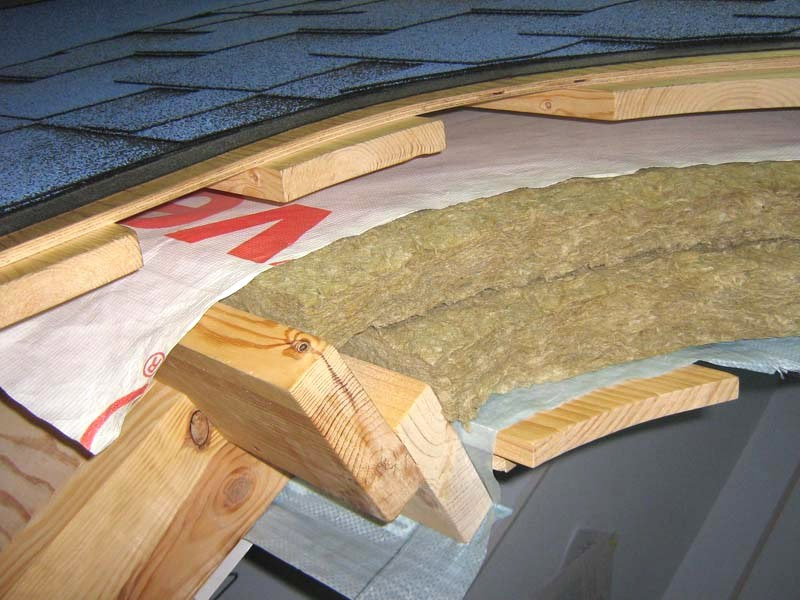
An example of a roofing cake for a roof covered with flexible tiles. From top to bottom: flexible tiles, lathing and base for roofing, moisture protection, insulation, vapor barrier.
For warm roofs, the following materials are suitable:
#1. Basalt wool - the most fireproof of all heaters. It has low thermal conductivity, high environmental friendliness. Mice with rats do not like this cotton wool, it does not get wet in the rain, is easily cut with a knife and weighs little. And she is very elastic.
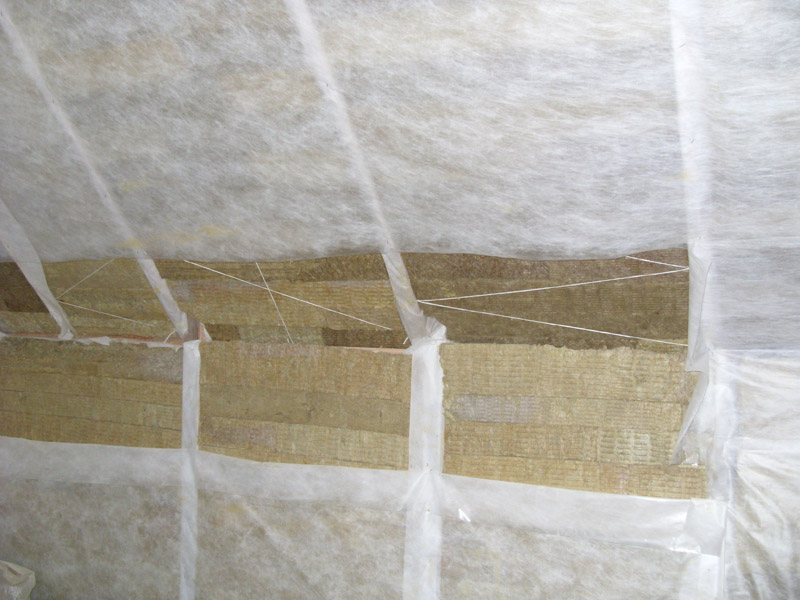
Warming of the attic with basalt wool.
#2. Polyurethane foam - this insulation is made directly at the construction site and applied with a special gun into the inter-rafter space. PPU has wonderful adhesion with any surfaces, light weight, monolithic layer, long (50 years) service life. And the fire is not terrible for him. But for its spraying, you will need special equipment and the involvement of a specialized team in the warming process that performs these works.
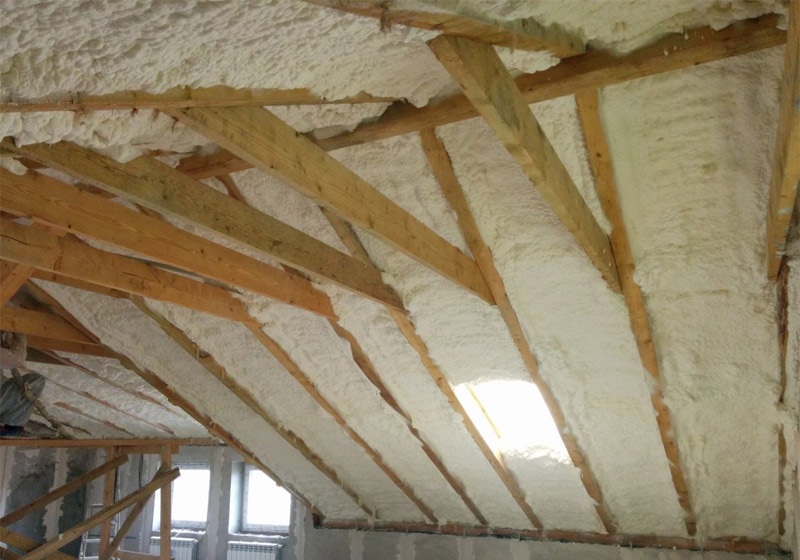
Roof with polyurethane foam applied between the rafters.
#3. Ecowool - 80 percent consists of cellulose fibers. The rest is antiseptic and refractory additives. This "breathable" insulation does not take either fungus or mold. The coating is seamless - which means there will be no cold bridges. Ecowool is assigned to serve 50 years, no less. It absorbs noise well, and saves heat no worse than expanded polystyrene.
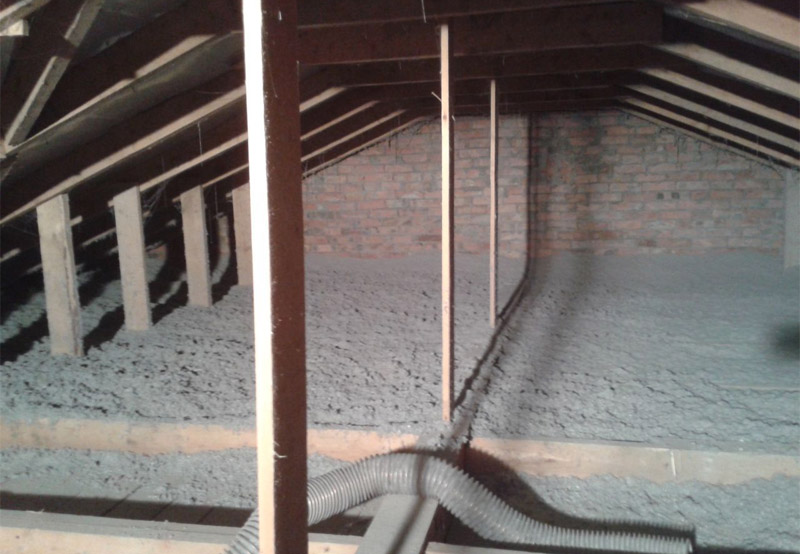
The attic is insulated with ecowool.
#4. Penoizol - modified polystyrene, for an inclined roof it is more often used in the form of plates. This elastic continuous coating does not burn (and does not melt), does not get wet and has low thermal conductivity.
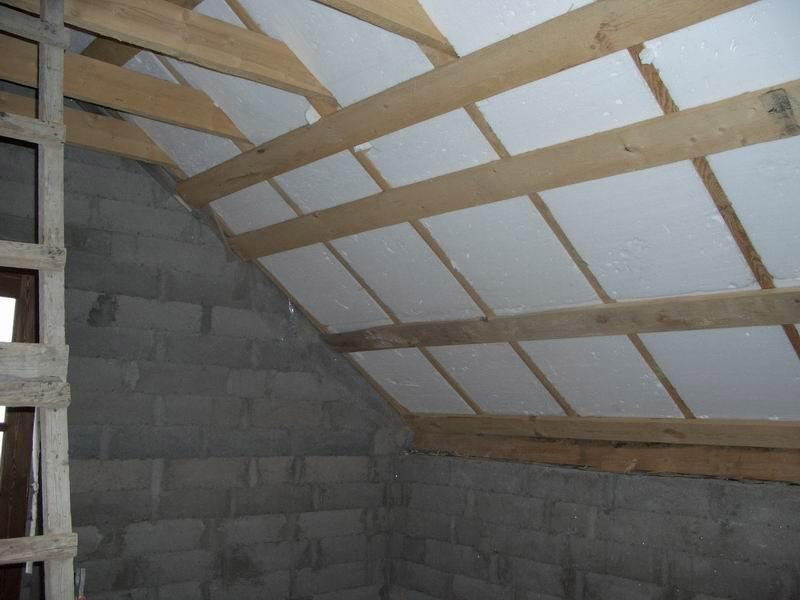
The attic warmed by plates of penoizol.
All heat insulators listed above are suitable for a cold roof. But besides this, you can use glass wool, which has a budget price. It does not burn, is environmentally friendly, does not contain organics. If it is tightly docked with an insulated surface, then the house will be warm. Various types of insulation for roofs based on fiberglass is not recommended for insulation of roof slopes. This is because, due to their weak elasticity, they will eventually begin to lag behind inclined surfaces.As a result, the level of thermal insulation will significantly deteriorate.
Popular brands of insulation for pitched roofs
#1. Basalt stone wool.
The manufacturer Technonikol produces this insulation in rolls (Teploroll) and in plates (Rocklight).
For slopes, rolled basalt cotton wool is more suitable. In addition, you can name the products of the Danish company Rockwool and Linrock Light.
#2. Glass wool.
Isover pitched roof - material produced by TEL technology by the French concern Saint-Gabin. These are plates of 5 and 10 centimeters thick and 61 centimeters wide.
Glass wool Knauf insulation is produced by the largest German company in the form of rolls 1.2 meters wide. Innovative technology made it possible to obtain practically non-caking material.
URSA GEO fiberglass insulation is distinguished by the large length of thin glass fibers, due to which there are many air gaps between them. This will save more heat.
- More details: Characteristics of fiberglass insulation URSA GEO
#3. Polyurethane foam and penoizol.
As for PPU and penoizol, there are a lot of manufacturers of these heaters. If you decide to use any of these types of thermal insulation, then find in your region a specialized company that is engaged in thermal insulation of the room using these heat insulators.
Material prepared Electricianexp.com

